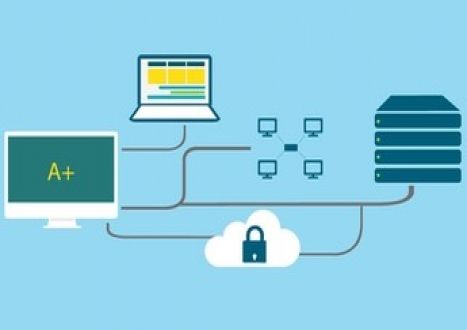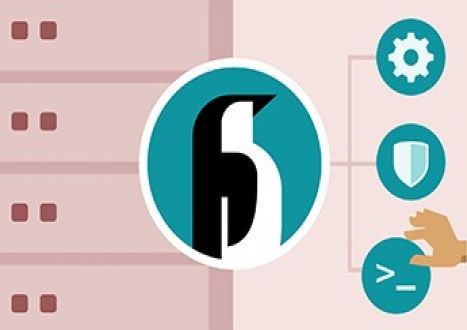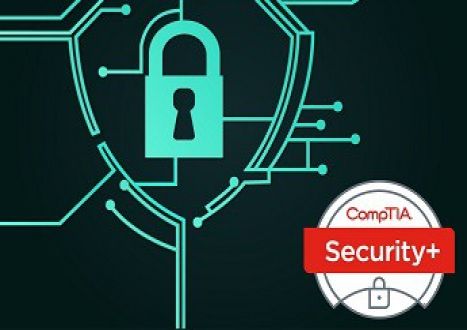- Home
- Video Courses
- Certifications
- SY0-601: CompTIA Security+ Dumps


SY0-601: CompTIA Security+ Certification Video Training Course
SY0-601: CompTIA Security+ Certification Video Training Course includes 201 Lectures which proven in-depth knowledge on all key concepts of the exam. Pass your exam easily and learn everything you need with our SY0-601: CompTIA Security+ Certification Training Video Course.
Curriculum for CompTIA Security+ SY0-601 Certification Video Training Course






































SY0-601: CompTIA Security+ Certification Video Training Course Info:
The Complete Course from ExamCollection industry leading experts to help you prepare and provides the full 360 solution for self prep including SY0-601: CompTIA Security+ Certification Video Training Course, Practice Test Questions and Answers, Study Guide & Exam Dumps.
CompTIA Security+ (Exam SY0-601)
Course Overview
Understanding the Purpose of CompTIA Security+
The CompTIA Security+ certification stands as one of the most recognized entry-level credentials in the cybersecurity industry. It has been designed to validate the fundamental skills necessary to perform core security functions and pursue a career in IT security. With cyber threats evolving rapidly, organizations need professionals who can identify risks, mitigate vulnerabilities, and apply best practices for protecting digital infrastructure. Security+ acts as a stepping stone for those entering the cybersecurity workforce, ensuring they understand both theoretical principles and applied practices.
Why the SY0-601 Exam Matters
The SY0-601 version of the Security+ certification exam introduces modern domains that reflect today’s security landscape. Unlike older versions, this exam emphasizes hands-on problem-solving, risk management, and emerging attack vectors. It prepares candidates to handle job roles where threats are dynamic and solutions must be both proactive and adaptive. Passing this exam proves to employers that the candidate can assess security posture, recommend improvements, and implement effective defense mechanisms.
The Growing Importance of Cybersecurity Knowledge
Every industry now relies heavily on digital technologies, from healthcare and finance to education and government services. This reliance makes every system a potential target for malicious actors. With increasing incidents of ransomware, phishing, data breaches, and advanced persistent threats, organizations are investing heavily in security training for employees. Security+ certification ensures professionals are prepared to understand the broad security spectrum and apply best practices to safeguard data, networks, and systems.
Course Design and Learning Path
This training course has been carefully designed to guide learners from foundational concepts to advanced applications. It covers the full scope of the SY0-601 exam objectives, ensuring readiness for both the certification exam and real-world application. The structure follows a progressive learning approach, starting with the fundamentals of security, moving into applied defense strategies, and concluding with advanced techniques and professional responsibilities.
Duration and Commitment
The course is divided into four major parts, each approximately 3000 words of instruction, allowing learners to gradually absorb knowledge without being overwhelmed. This part focuses on the course overview and modules, setting the stage for the following sections. Completing the course requires consistent study, practice with simulated questions, and a strong dedication to applying concepts in practical environments.
Career Impact of Completing Security+
For professionals seeking entry into cybersecurity, Security+ provides a trusted credential recognized across industries. For experienced IT professionals, the certification validates and enhances their existing skills, paving the way for specialized certifications and career advancement. With the certification in hand, candidates become more competitive in roles such as security analyst, systems administrator, network administrator, and security consultant.
Modules
Module One: Foundations of Cybersecurity
This introductory module lays the groundwork by exploring the core principles of security. Learners are introduced to confidentiality, integrity, and availability, the foundational triad of information security. The module covers the basic definitions of threat, vulnerability, and risk, highlighting how they interconnect in creating security challenges. Students are guided through an overview of common attack types, including malware, social engineering, and denial-of-service, providing them with the vocabulary and awareness needed to understand the larger course.
Module Two: Security Architecture and Design
The second module emphasizes how secure infrastructures are built and maintained. Learners explore secure network design principles, segmentation strategies, and the use of firewalls, proxies, and intrusion detection systems. Architectural considerations extend into cloud computing environments, where shared responsibility models and cloud-specific risks are explained in depth. The module equips learners with knowledge on designing layered defenses that resist intrusion while maintaining performance and usability.
Module Three: Identity and Access Management
Identity and access management is a cornerstone of modern cybersecurity. This module explores how organizations ensure the right people have access to the right resources at the right time. Topics include authentication methods, authorization models, and accounting principles. Students also learn about multi-factor authentication, single sign-on, and federated identity solutions. Real-world examples demonstrate how access mismanagement can lead to breaches, reinforcing the importance of robust IAM practices.
Module Four: Threats, Vulnerabilities, and Attacks
In this module, learners examine a detailed catalog of threats and vulnerabilities. The focus is not just on identifying attacks but also on analyzing the tactics, techniques, and procedures of adversaries. Examples include phishing campaigns, privilege escalation, and advanced persistent threats. Vulnerability management processes, such as scanning, patching, and remediation, are introduced. By understanding the offensive side of cybersecurity, learners are better prepared to develop defensive strategies.
Module Five: Secure Network Implementation
This module highlights the secure implementation of network technologies. Students learn about secure protocols, wireless security, and virtual private networks. Encryption protocols such as TLS, IPSec, and SSH are explained in practical terms. Learners gain insight into secure device configuration, including switches, routers, and firewalls. The module reinforces the importance of applying encryption and strong authentication within networks to ensure the confidentiality and integrity of communications.
Module Six: Cryptography and Public Key Infrastructure
Cryptography is an essential component of data security, and this module introduces both its theory and practice. Learners explore symmetric and asymmetric encryption, hashing functions, and digital signatures. The concept of public key infrastructure is examined in depth, showing how organizations use certificates and certificate authorities to establish trust. The module demonstrates practical uses of cryptography in securing email, files, and network traffic, highlighting both its strengths and common implementation pitfalls.
Module Seven: Risk Management and Governance
Risk management is vital to cybersecurity practice. This module covers methods for assessing risks, analyzing potential impacts, and applying appropriate mitigation strategies. Governance frameworks such as NIST, ISO, and COBIT are introduced to demonstrate how organizations establish structured approaches to security. Learners understand compliance requirements, regulatory environments, and the importance of aligning security initiatives with organizational goals. This knowledge prepares candidates for both the exam and the real-world workplace where governance plays a significant role.
Module Eight: Security Operations and Monitoring
This module examines the day-to-day practices that keep organizations secure. Topics include security operations center functions, incident detection and response, log analysis, and security information and event management systems. Learners are introduced to forensic concepts, chain of custody procedures, and disaster recovery planning. By mastering these topics, students gain the ability to recognize unusual activity, investigate potential breaches, and coordinate effective responses.
Module Nine: Emerging Technologies and Security Trends
The final module explores cutting-edge developments shaping cybersecurity today. This includes the integration of artificial intelligence in security tools, the growing use of automation for incident response, and the challenges of securing Internet of Things devices. Students also examine the impact of blockchain technology, quantum computing, and new encryption standards on the future of cybersecurity. By staying informed about trends, learners are better equipped to remain relevant and adaptive in a constantly shifting landscape.
Requirements of the Course
General Prerequisites for Security+ Training
The CompTIA Security+ certification is considered an entry-level credential in cybersecurity, but that does not mean it requires no preparation. Students enrolling in this course should have a foundational understanding of computer systems and networking. This ensures they can quickly grasp security concepts without being overwhelmed by technical jargon. While Security+ can be pursued without prior certifications, most learners benefit from having at least basic IT knowledge, particularly in areas such as operating systems, TCP/IP, and troubleshooting common technical issues.
Familiarity with Networking Fundamentals
A strong grasp of networking principles is essential for success in this course. Learners should understand how devices communicate across networks, including concepts like IP addressing, subnetting, and routing. Protocols such as HTTP, DNS, DHCP, and FTP should be recognizable, even at a surface level, so students can comprehend how attackers might exploit them. This networking foundation helps in analyzing traffic patterns, identifying anomalies, and applying secure configurations that protect systems from common attacks.
Prior Knowledge of Operating Systems
Students are expected to be familiar with at least one major operating system. This may include Windows, Linux, or macOS, as these are frequently referenced throughout the course. For instance, knowledge of Windows administration is beneficial for understanding Active Directory security, while Linux familiarity assists in comprehending command-line tools used in penetration testing and server hardening. Understanding how these operating systems manage files, permissions, and processes provides a baseline for exploring more advanced security measures.
Recommended IT Certifications and Experience
Although not mandatory, CompTIA itself recommends that learners have obtained CompTIA Network+ or equivalent experience before pursuing Security+. This is because networking knowledge plays a significant role in implementing secure systems and detecting vulnerabilities. Additionally, individuals with one to two years of practical IT experience, particularly in roles such as help desk support, system administration, or junior networking, often find themselves better prepared. These experiences provide real-world contexts that make the training more relatable and the concepts easier to apply.
Technical Resources Needed for the Course
Learners will require access to a computer system capable of running virtualization software or security tools. A modern laptop or desktop with adequate processing power, memory, and storage is recommended. This allows students to create isolated environments where they can practice configuring firewalls, testing security applications, and analyzing simulated attacks without jeopardizing their own networks. A stable internet connection is also critical for accessing online labs, research materials, and updates to the training modules.
Software and Tools for Practice
Throughout the course, students will use a variety of security-related tools. These include packet analyzers, vulnerability scanners, and intrusion detection software. While some are enterprise-level products, many open-source alternatives are available for practice environments. Learners should be comfortable installing and experimenting with such tools in a safe, virtualized environment. Familiarity with virtualization platforms such as VMware or VirtualBox is encouraged, as these allow students to set up multiple systems for realistic simulations of enterprise networks.
Commitment to Independent Study
Completing this course and preparing for the Security+ exam requires dedication beyond the provided lectures and readings. Learners are expected to engage in independent study, review official CompTIA materials, and regularly test themselves with practice questions. Consistent practice builds confidence in applying concepts across a variety of contexts. A minimum of several hours of weekly self-study, alongside structured lessons, will ensure the knowledge becomes second nature by the time of the exam.
Analytical and Problem-Solving Skills
Cybersecurity is not merely about memorizing definitions or procedures; it demands analytical thinking and problem-solving. Students enrolling in this course should be prepared to approach scenarios critically, identifying what information is relevant, what risks exist, and which solution is most effective. Many exam questions on the SY0-601 test problem-solving skills rather than rote knowledge, requiring candidates to apply logic in choosing the best response. Cultivating this mindset throughout the course is one of the most important requirements for success.
Communication and Documentation Abilities
An often-overlooked requirement for cybersecurity professionals is effective communication. Throughout this course, learners will be encouraged to practice explaining security concepts clearly and documenting processes in a professional manner. Whether writing an incident report, presenting findings to a non-technical audience, or creating internal security policies, communication is a critical skill. Employers expect Security+ certified professionals to not only understand security but also to articulate risks and solutions effectively.
Time Management Expectations
Managing time is a crucial requirement for anyone attempting this certification. The course is divided into multiple modules, each demanding attention and reflection. Learners must allocate enough time to review materials, complete practice exercises, and revisit challenging topics. Setting a study schedule and adhering to it significantly increases the likelihood of mastering the content before the exam. Without strong time management skills, students may find themselves overwhelmed as the exam approaches.
Financial Investment in Learning Resources
Students should also be prepared for the financial requirements associated with pursuing Security+. Beyond the cost of the certification exam, there may be additional expenses for training resources, lab environments, or supplementary study guides. This course provides a comprehensive framework, but serious learners often invest in practice exams, flashcards, or online labs to reinforce their understanding. Viewing these costs as an investment in one’s career development helps maintain motivation throughout the process.
Motivation and Professional Goals
Finally, perhaps the most important requirement for this course is a genuine motivation to learn and apply cybersecurity knowledge. Those who approach the training simply as a box to check may struggle to internalize the material. On the other hand, students who are driven by curiosity, a desire for career advancement, or a passion for protecting digital environments often excel. Identifying personal goals at the start of the course provides a guiding force that sustains motivation through the more challenging sections of study.
Bridging Knowledge Gaps During the Course
Even with prerequisites, many students encounter gaps in their knowledge while progressing through the training. The course requires a willingness to pause, review, and seek clarification when concepts are not fully understood. This may mean revisiting networking basics, refreshing knowledge of operating system commands, or spending additional time on cryptographic principles. Meeting these knowledge gaps with persistence ensures that learners do not carry weaknesses into the final exam preparation stage.
Developing Hands-On Skills in Parallel
Theory alone is not enough to succeed in Security+. The exam increasingly emphasizes practical scenarios, and employers demand job-ready skills. Learners are therefore required to practice hands-on security tasks in parallel with theoretical study. This includes configuring virtual machines, simulating attack scenarios, analyzing logs, and applying security controls. Meeting this requirement transforms abstract knowledge into tangible skills, preparing learners for both exam questions and workplace responsibilities.
Ethical Responsibility as a Requirement
Cybersecurity training comes with an implicit ethical requirement. Learners must approach this course with the understanding that knowledge gained can be misused if applied irresponsibly. The requirement is to commit to ethical behavior, following the principles of protecting systems rather than exploiting them for personal gain. By adopting this mindset, students not only prepare for certification but also align themselves with the professional integrity expected in the cybersecurity industry.
Course Description
Purpose of the Training Course
The CompTIA Security+ (SY0-601) training course has been developed to prepare learners for both the official certification exam and the practical challenges of working in cybersecurity. Its purpose goes beyond memorization of facts. Instead, it emphasizes comprehension, application, and problem-solving in real-world contexts. The course description outlines not only the skills students will gain but also how those skills connect to professional opportunities and long-term career paths.
Core Structure of the Course
The course has been divided into multiple parts to align with the major exam objectives. Each section builds progressively on the previous one, ensuring that learners develop a complete understanding of cybersecurity from foundational principles to advanced techniques. Through detailed instruction, examples, and applied practice, students engage with topics such as threats and vulnerabilities, identity and access management, secure network design, cryptography, and incident response. The design ensures that learners develop a wide scope of knowledge while also cultivating depth in critical areas of cybersecurity.
Learning Outcomes of the Course
Upon completing this training, learners will be able to assess organizational security, identify weaknesses in systems, and apply corrective measures that strengthen defenses. They will gain familiarity with common attack methods and develop the ability to recognize suspicious activity before it escalates into a breach. Beyond technical capabilities, learners will also understand compliance requirements, governance frameworks, and professional ethics. These outcomes combine to ensure that graduates of the course are capable of stepping into entry-level security roles with confidence and competence.
Approach to Teaching and Delivery
The course adopts a blended approach that combines conceptual explanations with practical exercises. By encouraging learners to apply knowledge in hands-on labs and simulated environments, it ensures that theory does not remain abstract. The explanations have been written in accessible language, avoiding unnecessary jargon while still introducing the professional terminology needed to succeed in cybersecurity roles. The training is designed to be self-paced, allowing learners to revisit complex concepts as many times as necessary while steadily advancing through the material.
Practical Emphasis in the Course Design
One of the defining features of the Security+ training course is its emphasis on practicality. Students are encouraged to use tools and technologies that mimic workplace environments. For example, they will practice analyzing logs, configuring firewalls, and evaluating network traffic. By simulating realistic scenarios, the course prepares students for the types of challenges they will face in an organization’s security team. This practical emphasis ensures that learners do not just pass the exam but also develop job-ready skills that make them valuable from the first day of employment.
Alignment with the SY0-601 Exam Objectives
The course has been mapped directly to the official CompTIA Security+ SY0-601 exam objectives. These objectives include five main domains: attacks, threats, and vulnerabilities; architecture and design; implementation; operations and incident response; and governance, risk, and compliance. Each module of the course addresses one or more of these domains, ensuring that learners are prepared for every aspect of the exam. This alignment eliminates the risk of knowledge gaps and gives students the confidence that their study efforts are targeted and efficient.
Continuous Updates and Relevance
The world of cybersecurity changes rapidly, and a course that becomes outdated is of little value. This training has been designed with adaptability in mind, using examples and scenarios that reflect current threats and best practices. Updates to the course material ensure that learners remain aligned with industry developments. This continuous relevance not only aids in exam preparation but also prepares learners to adapt to changes in real-world environments, where new threats and technologies emerge regularly.
Support for Lifelong Learning
Although the course focuses on preparing learners for the Security+ certification, it also establishes a foundation for further study. Cybersecurity is a vast and ever-expanding field, and professionals are expected to continue learning throughout their careers. This course introduces learners to advanced topics and certifications they may wish to pursue later, such as CompTIA CySA+, CASP+, or vendor-specific credentials. In this way, Security+ serves as a gateway, and the course description reflects its role as the first step in a lifelong journey of cybersecurity expertise.
Who This Course Is For
Aspiring Cybersecurity Professionals
The course is ideally suited for individuals who are seeking to launch their careers in cybersecurity. Those who are new to the field but passionate about technology and digital protection will find this training a comprehensive introduction. By covering the broad spectrum of security topics, it provides the knowledge necessary to take on entry-level security roles, such as security analyst or junior penetration tester. Aspiring professionals will benefit from the course’s structured approach, which introduces concepts gradually while ensuring depth in critical areas.
Current IT Professionals Transitioning to Security
Many students who enroll in Security+ training are already working in IT roles but wish to transition into cybersecurity. For system administrators, network engineers, or help desk technicians, this course bridges the gap between general IT knowledge and specialized security expertise. It provides the additional skills needed to shift into security-specific positions while leveraging their existing technical backgrounds. For such learners, the course highlights how their prior IT experience connects directly to security principles, making the transition smoother and more intuitive.
Students and Recent Graduates
This course also serves as an excellent pathway for students and recent graduates entering the workforce. Those who have studied computer science, information technology, or related fields will find that Security+ provides a recognized credential that demonstrates applied skills. For graduates competing in the job market, the certification sets them apart by validating not only academic knowledge but also practical security capabilities. This is particularly valuable at a time when employers are seeking candidates who can demonstrate readiness from day one.
Career Changers and Professionals from Other Industries
The course is also designed for professionals from non-technical backgrounds who are considering a career change. Individuals from industries such as business, law, or finance may decide to move into cybersecurity due to its high demand and growth potential. This training provides a structured and accessible entry point, ensuring that even those with minimal technical experience can build the skills necessary to begin a new career path. By focusing on foundational knowledge and gradually increasing complexity, the course supports learners from a wide range of starting points.
Military and Government Personnel
Cybersecurity plays a critical role in national defense, making Security+ a valuable credential for military and government personnel. This course is designed to support individuals in these sectors by providing training aligned with Department of Defense requirements. For service members seeking to advance in cybersecurity-related roles, or for veterans transitioning into civilian careers, the Security+ certification offers both recognition and opportunity. The course addresses security concepts relevant to defense environments while maintaining broad applicability across industries.
Organizations and Corporate Training Programs
Employers may also use this course as part of their professional development initiatives. Organizations seeking to strengthen their security posture often encourage employees to pursue Security+ certification. This training provides a ready-made curriculum that can be integrated into corporate learning programs. By enrolling multiple staff members, organizations ensure a consistent level of security awareness across their workforce, reducing vulnerabilities and improving overall defense strategies.
Lifelong Learners and Technology Enthusiasts
Finally, this course is well suited for individuals who may not necessarily pursue cybersecurity as a career but who are passionate about technology and wish to understand how to protect their own systems. Enthusiasts who enjoy exploring digital tools, experimenting with systems, or keeping up with emerging technologies will find value in the structured knowledge that Security+ provides. By completing the course, they gain the ability to safeguard personal data and contribute to secure practices in their communities.
Matching the Course to Professional Goals
An important part of determining whether this course is appropriate lies in matching it to individual professional goals. Those seeking rapid entry into cybersecurity roles, advancement within IT positions, or long-term career growth will all benefit. However, learners should be prepared to dedicate themselves fully to the study process and embrace both the technical and non-technical aspects of security. The course is designed to serve as a foundation for diverse learners, and its wide applicability makes it a powerful stepping stone regardless of background or experience level.
Student Feedback
Similar CompTIA Video Courses









































































Only Registered Members Can Download VCE Files or View Training Courses
Please fill out your email address below in order to Download VCE files or view Training Courses. Registration is Free and Easy - you simply need to provide an email address.
- Trusted By 1.2M IT Certification Candidates Every Month
- VCE Files Simulate Real Exam Environment
- Instant Download After Registration.
Log into your ExamCollection Account
Please Log In to download VCE file or view Training Course
Only registered Examcollection.com members can download vce files or view training courses.




